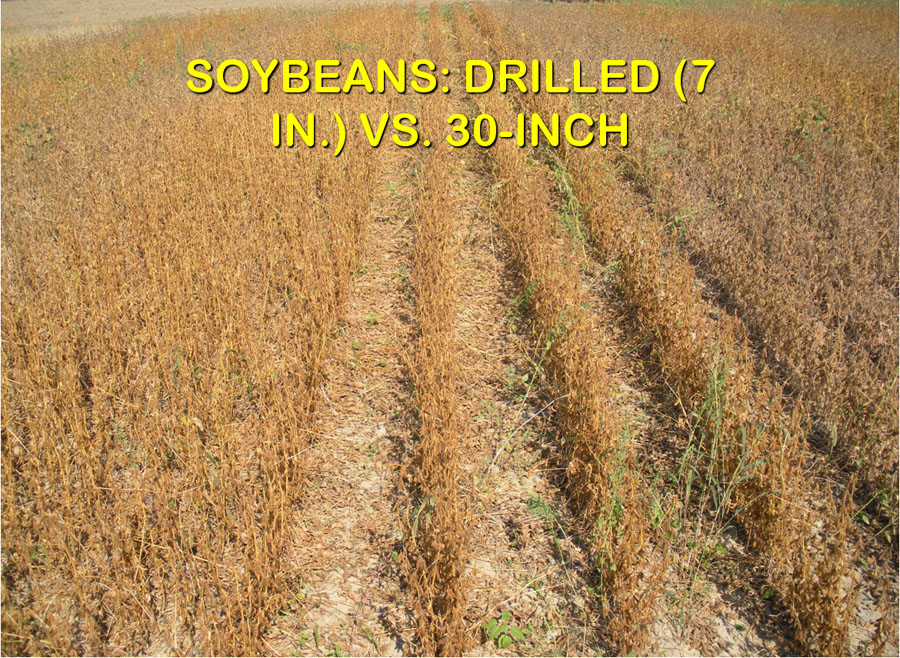Competency Area 5: Seeding Rates and Row Spacing
PO 22. Know the factors that influence the planting pattern of major Northeast crops. Know the advantages of broadcast versus drilled small grains.
Equi-distant spacing between and within rows is the ideal pattern for most crops.
Small grains – There is a yield response to narrow-row drills (i.e. 4" drills) so European wheat is planted in narrow rows. In the Northeast, wheat is planted in 7" rows because no 4-inch drills are available.
 |
Soybeans - Plant at 30, 15, and 7” rows. Soybeans yield best in New York and New England at 7” row spacing because of the more equi-distant spacing (7 inch by 3 inch pattern compared with a 30 inch by 1.5 inch pattern). But a corn planter has better depth control than a drill so soybean stands emerge more rapidly and more uniform in 30 inch row spacing than 7 inch row spacing. |
Corn silage yields better in narrow rows because of a more equidistant spacing (15 inch by 12 inch vs. a 30 by 6 inch pattern).
Available equipment
Planting pattern must match your other equipment, especially the harvester. For corn, Kemper or bi-directional chopper heads make narrow row (15 inch) corn silage possible. Equipment is currently not available to harvest narrow corn for grain so all corn grain has 30 inch row spacing. Also, it is more difficult to sidedress 15 inch spaced rows than 30-inch rows.
Pest control
Drilling soybeans in 7” rows precludes cultivation and can result in increased occurrence of white mold.
Narrow-row corn makes post-emergence herbicide application (i.e. glyphosate) more difficult and some of the rows get run over by the spray rig.
Broadcast vs. drilled small grains
An advantage of broadcasting small grains with a fertilizer spreader is that the small grain can be planted much more rapidly than what would be possible with a grain drill. However, there is an additional cost for harrowing in the seed after broadcasting. Furthermore, the final stand is usually lower with broadcast than with drilled small grains because of poor seed depth placement with the broadcast/harrowing operation (some seed still remains on the surface). The latter trip on the field can also result in higher total costs in seeding a small grain. When small grains (rye) are used as a cover crop, broadcasting might be the most suitable method because the cover crop can be rapidly planted. When small grains are to be harvested as a crop, using a grain drill would be recommended because of more uniform final stand establishment.
Quick Links
- Competency Area 1: Crop Adaptation
- Competency Area 2: Crop Staging, Growth, and Development
- Competency Area 3: Tillage Systems
- Competency Area 4: Seeding Factors
- Competency Area 5: Seeding Rates and Row Spacing
- Competency Area 6: Considerations in Replanting Decisions
- Competency Area 7: Forage Harvesting Factors
- Competency Area 8: Cropping Systems
